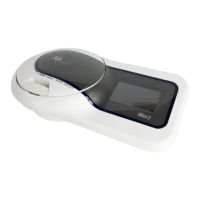What to do if I see empty spots on the Invitrogen Laboratory Equipment membrane?
- JjacksonwilliamAug 19, 2025
If you observe empty spots on the membrane, it may be due to air bubbles trapped between the gel and the membrane, preventing protein transfer. Ensure you remove all air bubbles using the Blotting Roller. Another cause could be the use of expired or creased membranes. Always use the iBlot™ 2 Transfer Stacks before the expiration date printed on the package.

